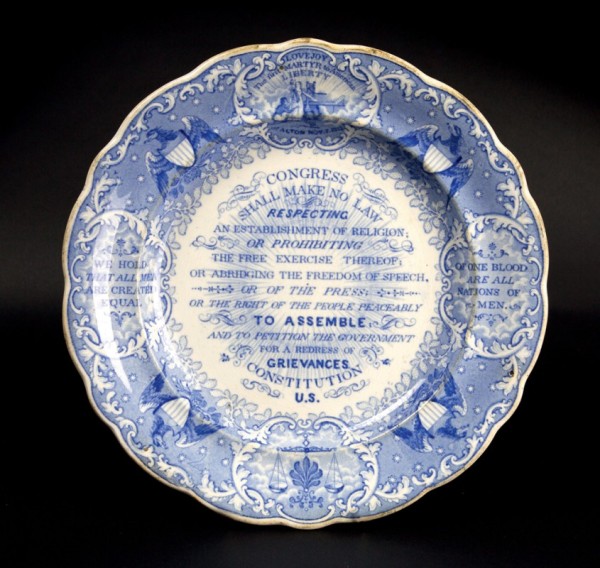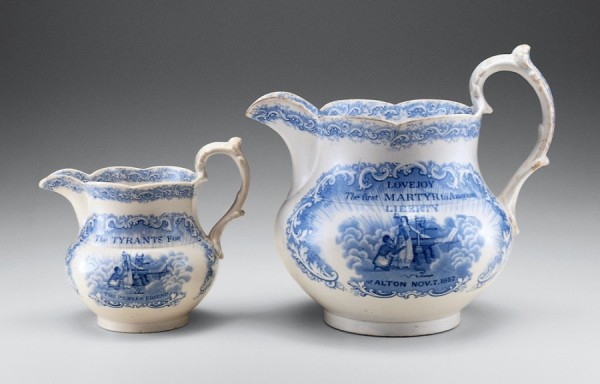
Plate, Staffordshire, England, ca. 1838. Lead-glazed earthenware. D. 7 3/4". (Private collection; photo, Neil Ewins.)

“Elijah P. Lovejoy,” from Henry Tanner, The Martyrdom of Lovejoy (1881), unpaginated. (Special Collections and College Archives, Musselman Library, Gettysburg College.)

“The mob attacking the warehouse of Godfrey Gilman & Co., Alton, Ill., on the night of the 7th of November, 1837, at the time Lovejoy was murdered and his press destroyed,” from Henry Tanner, The Martyrdom of Lovejoy (1881), unpaginated. (Special Collections and College Archives, Musselman Library, Gettysburg College.)

Advertisement, The Emancipator (New York), November 8, 1838, p. 101. (Courtesy, NewsBank / Readex.)

Detail of the plate illustrated in fig. 1 showing the First Amendment of the United States Constitution.

Advertisement, The Emancipator (New York), October 11, 1838, p. 97. (Courtesy, NewsBank / Readex.)

Detail of the plate illustrated in fig. 1 depicting a printing press and an enslaved person. Inscribed: LOVEJOY / The first MARTYR to American / LIBERTY / ALTON NOV. 7. 1837. (Private collection; photo, Neil Ewins.)

Printed ribbon, United States, 1837–1840. Silk. L. 4 1/4". (Colonial Williamsburg Foundation.)

Cup plate, Staffordshire, England, ca. 1838. Lead-glazed earthenware. D. 4". (Private collection; photo, Neil Ewins.)

Jugs, Staffordshire, England, ca. 1838. Lead-glazed earthenware. H. of tallest 6 1/4". (Collection of Rex Stark; photo, Gavin Ashworth.)

Plate, Staffordshire, England, late nineteenth century. Lead-glazed earthenware. D. 9 1/4". (Reeves Museum of Ceramics, Washington and Lee University; photo, Robert Hunter.)
